It is an alternative source to the use of antibiotics in diets, which is a big problem because they develop resistant strains of pathogens, and infectious diseases risk becoming untreatable, this aspect also involving human health because they are common infectious agents.
Having citric acid, oregano essential oil and cinnamon essential oil in its composition, our product rich in phytomolecules is recommended when you want:
– maintaining general health by increasing immunity, but also by good control of pathogens (E.Coli, Salmonella, Pasteurella, Mycoplasma, etc.) that the components exert
– developing the microbiome, which means a solid intestinal immunity and an optimization of digestion with positive effects on nutrient absorption
– increasing sports performance – decreasing the risk of diseases
The two main bioactive ingredients in oregano oil, carvacrol and thymol, have antibacterial, antioxidant, antiviral, antiparasitic and immunomodulatory when administered to pigeons. Carvacrol and thymol have been studied for their potential effect on intestinal barrier function, which plays a crucial role in maintaining intestinal health. These compounds may help reduce inflammation in the gut, protect and maintain intestinal integrity, control the growth of harmful bacteria in the gut, and improve pigeon performance. Oregano oil is a natural alternative to antibiotics for improving gut health and barrier function in pigeons. It is known for its ability to combat bacteria that commonly cause disease in pigeons, such as Escherichia coli, Salmonella, and Clostridium, and is currently recommended for use in feed in place of antibiotics.
Respiratory diseases represent a significant component of the overall incidence of disease in pigeons. In many cases, respiratory diseases detected in pigeon flocks may represent part of a prevalent disease originating in other biosystems. For example: various microbial agents can trigger respiratory syndromes, and environmental problems can increase the effect of such pathogens, leading to more severe cases of disease. Pathogens such as Ornithobacterium rhinotracheale, Escherichia coli, Avibacterium paragallinarum, Pasteurella multocida, Mycoplasma gallisepticum, and Bordetella avium have been frequently isolated from birds suffering from complex respiratory diseases. Cinnamon essential oil has been shown in various studies to reduce the virulence of Staphylococcus aureus, Escherichia coli, Avibacterium paragallinarum, Pasteurella multocida, Mycoplasma gallisepticum, and Ornithobacterium rhinotracheale. The antimicrobial effect of cinnamon essential oil against various bacteria such as Pseudomonas aeruginosa, Enterococcus faecalis, Salmonella spp., and Vibrio parahaemolyticus has also been demonstrated. The predominant active compound in cinnamon oil is cinnamaldehyde.
Citric acid (CA) is a weak organic acid, a natural preservative that occurs in small amounts in a variety of fruits and vegetables, especially citrus fruits. Its inclusion in bird diets has been shown to decrease colonization of pathogens and limit the production of toxic metabolites, improve the availability of proteins, minerals such as Ca, P, Mg and Zn, and serve as a substrate in intermediary metabolism. Its addition to drinking water is beneficial for intestinal health and from a sanitary point of view. Its inclusion in the diet improves the performance and non-specific immunity of pigeons. It also increases specific immunity against New Castle disease in the chicks. Their effect in pigeon diets can also suppress the growth of pathogens and improve digestion, absorption, and immunity of the intestinal mucosa. It increases pepsin secretion through proteolysis and the release of hormones, which regulate the digestion and absorption of proteins.
Notice the beneficial effects that the product offers:
– Weight gain, due to muscle development
– Decrease in the rate of illness
– Increased resistance to stress (transport, heat, humidity, vaccinations, etc.)
– Significant improvement in health
administering 5ml Herbasan to 1 L of drinking water every day.















